
Say hello to this amazing Homemade Gnocchi with Brown Butter and Sage. Golden gnocchi pillows covered in nutty burnt butter and crispy sage
Imperfect-shaped gnocchi
There’s something charming about simplicity and imperfection. This rings true for me, especially when making my Gnocchi with Brown Butter and Sage from scratch. Of course, I admire the beautiful and immaculate grooves that are created by rolling the gnocchi dough against the fork, but I still prefer mine, ‘rustic’ and simple.
None of my gnocchi looks perfect or identical, and I dig that. It’s the look of a passionate home cook and that’s a meal made with love!

One of my favourite way to shape my gnocchi is to ‘roll em, cut em and stamp em’. I stamp each gnocchi in the middle with my famous (big exaggeration) fingerprint. Quick, simple and cute, the way cooking should be a majority of the time. Off-topic, when I was in my twenties, I met a girl that loathed being called cute because she said the real meaning of cute meant ‘ugly but interesting’. Is that even true? I really need to find out because now it’s bugging me!
Here they are folks, my no grove gnocchi. Yay, because they’re not ugly looking! My imperfect-shaped gnocchi is soft and chewy but crispy on the outside.
More tempting pastas to try at home:
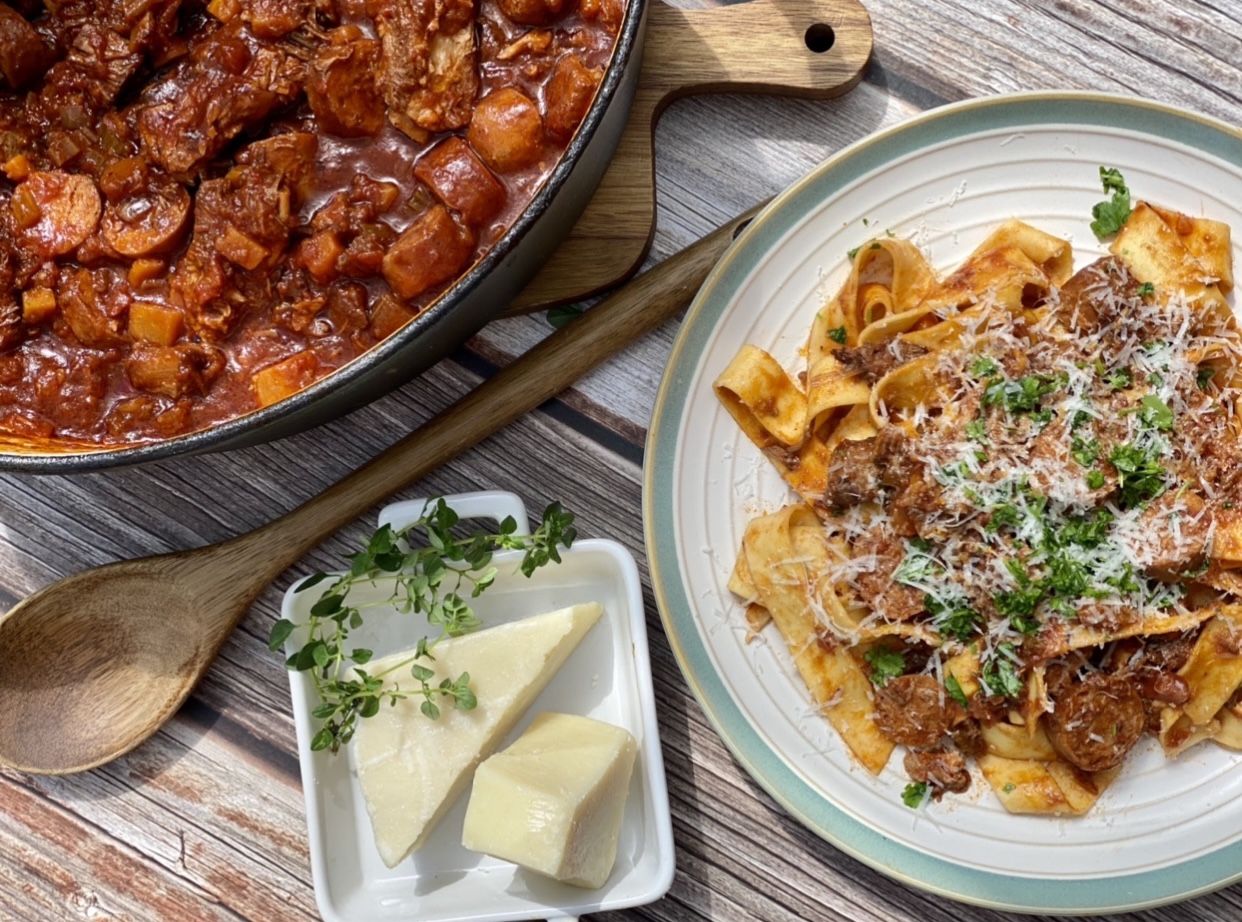
Ragu with 3 meat
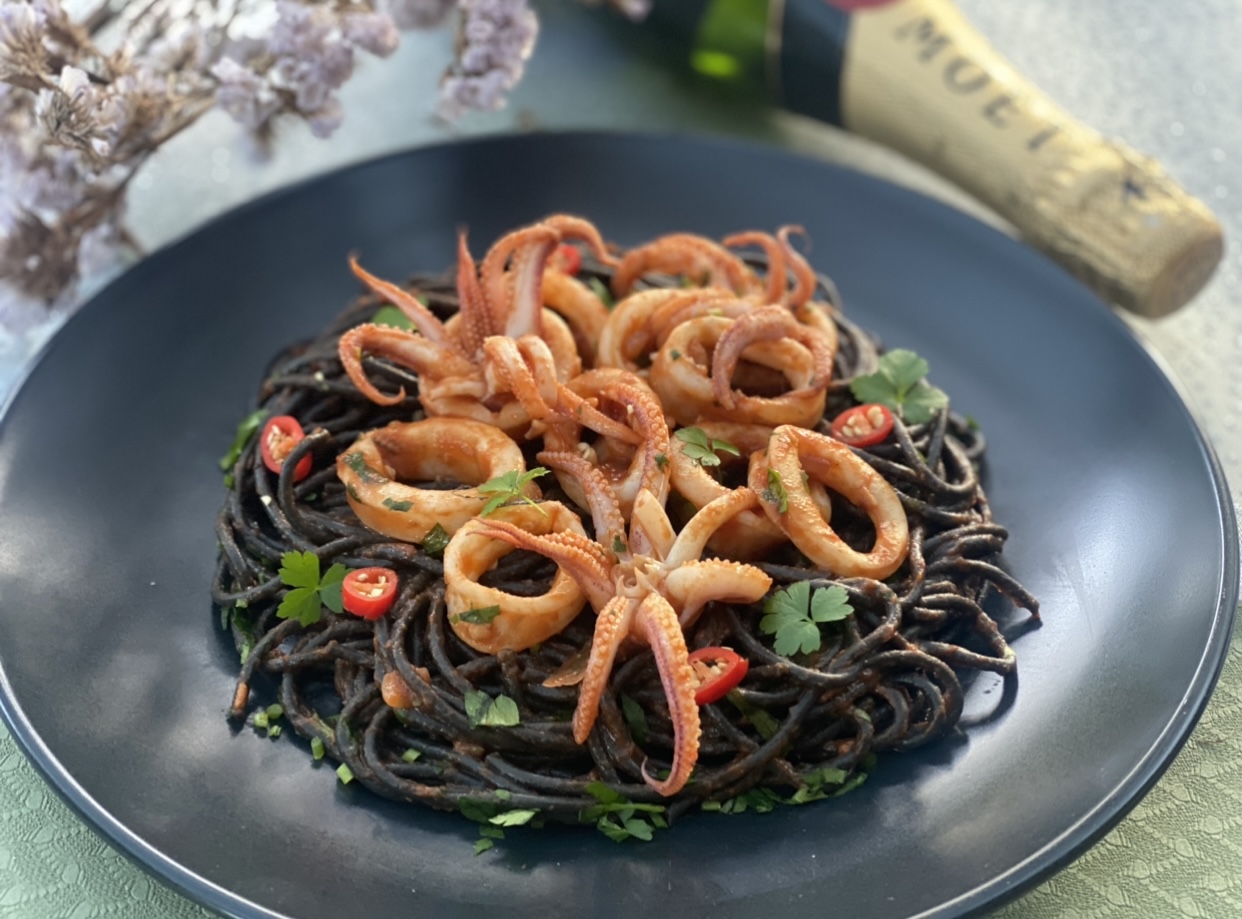
Spicy Squid Ink Pasta with Calamari
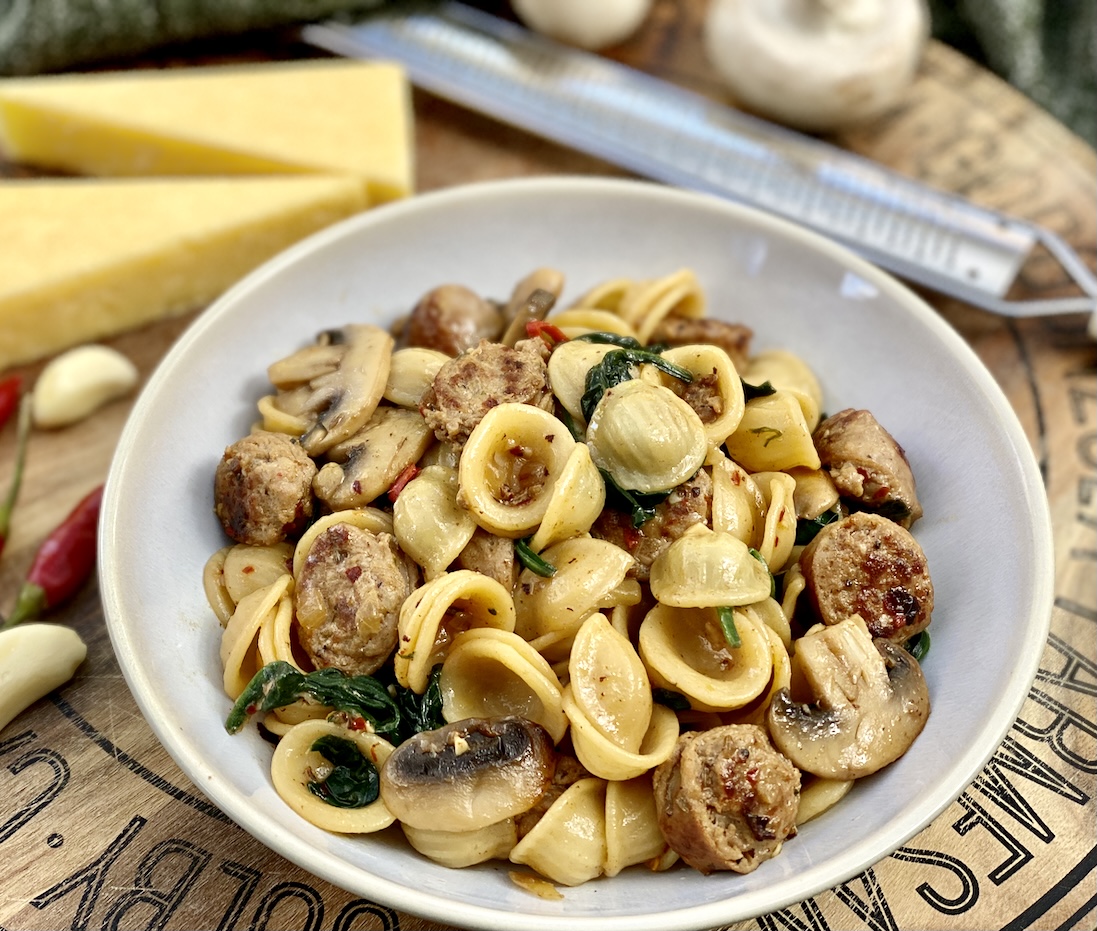
Spicy Sausage Pasta
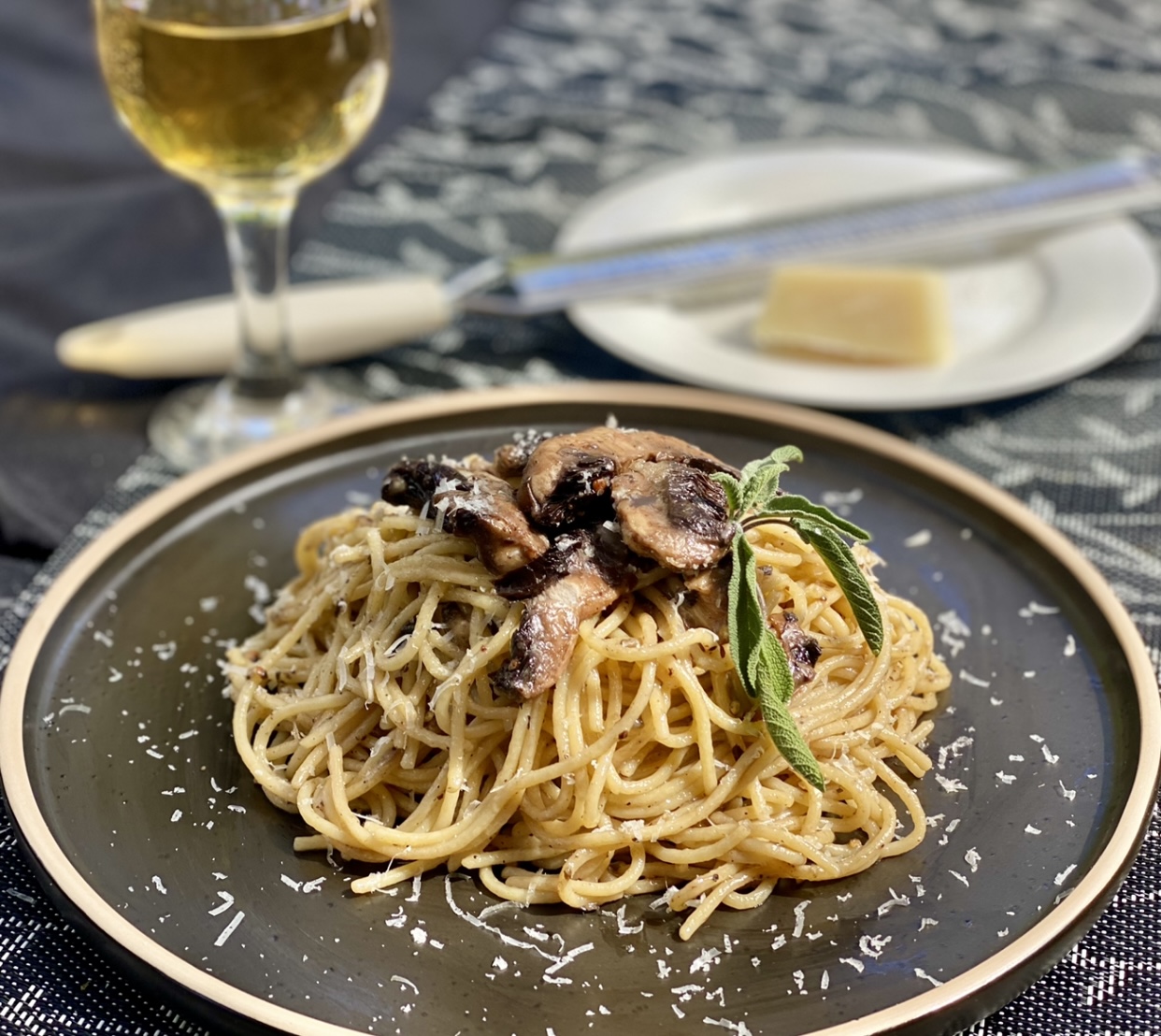
Mushroom Cacio e Pepe
Gnocchi with Brown Butter and Sage
Gnocchi with Brown Butter and Sage is my favourite way to enjoy gnocchi. Some people call brown butter ‘burnt butter’, but either way, it doesn’t matter because it’s magical. Cooking the butter until it’s dark golden until the milk solids turn into brown flecks makes the butter aromatic, with a delicious nutty smell and flavour.
This gnocchi dish only requires a few ingredients, but it tastes luxurious. The nutty brown butter along with the earthy sage makes for a delightful pairing with soft and crispy pillows of gnocchi, but of course, it never hurts to add loads of freshly grated parmesan on top.
I used homemade gnocchi made from scratch, but I won’t judge if you decide to use pre-made gnocchi from the store to make this recipe. I’m all in for taking shortcuts if it still ends with a delicious result. The chilled section of the supermarket has some good quality, fresh pre-made gnocchi.

Which potatoes are best for gnocchi?
Selecting the correct variety of potatoes is crucial when making homemade gnocchi because using the wrong potatoes may cause mushy gnocchi that won’t hold their shapes.
The best potatoes to use for gnocchi are ones that have low moisture content, such as floury or all-rounders potatoes. I used Desiree potatoes, however other ideal potatoes for gnocchi are Creme Royale and Russet potatoes. My Italian friend, Olga, told me that her mum uses old potatoes that are a week old from when she purchased them. Old potatoes are perfect for gnocchi because they contain less moisture than new potatoes.
Avoid potatoes that are too waxy or wet, as these are likely to cause you problems with the consistency of the dough. Also, they’ll likely become soggy when cooking and may fall apart on you! We definitely want to avoid this because no one wants a messy kitchen for no good reason.
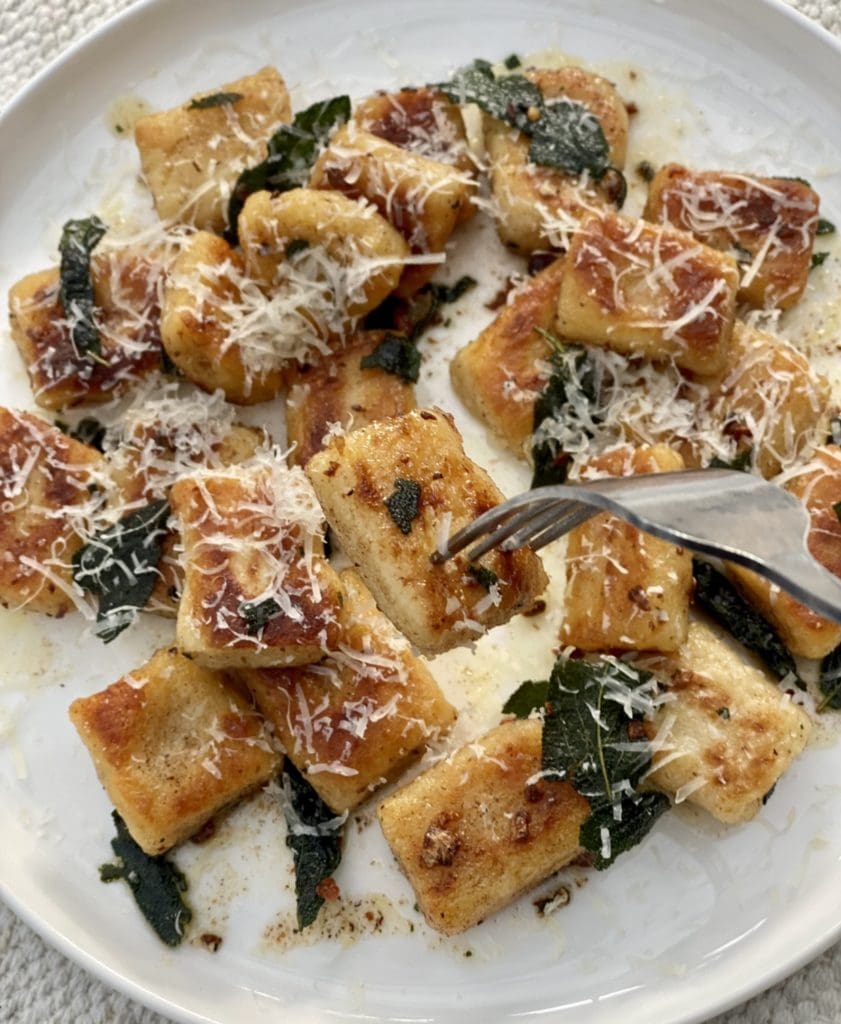
Is it better to boil or bake potatoes for gnocchi?
This question may cause some people to go bright red in the face whilst arguing that their answer is correct.
I’m a massive fan of cooking shows. I don’t watch them often these days, but when I did, the professional chefs on TV would bake their potatoes for gnocchi. Their expert advice was for us to avoid boiling the potatoes because it’ll make the gnocchi dough too wet. Taking this advice, I’ve always baked my potatoes for homemade gnocchi.
To me, that made sense because we need floury potatoes with low water content for gnocchi, so why would we want to cook them in water? Taking this advice, I’ve always baked my potatoes for homemade gnocchi.
However, things got a little complicated. Olga’s (one of my dearest friends) mother heard I was baking my potatoes for gnocchi and went berserk. ‘No one in Italy bakes potatoes for gnocchi! Don’t listen to those stupid chefs. They know nothing!’ She tells me, throwing her hands up in the air in exasperation. Yes, some Italian women can be a little fiery, and I love this! ‘Next time when you make gnocchi Catalina, don’t bake potatoes, you boil them. It will not give you problems if you use the right potatoes!’.
Hey, who am I to argue with an Italian? I believe her, but now I’m conflicted. I’m definitely going to take Olga’s mother’s advice next time and try boiling my potatoes.

Can you store gnocchi dough in the fridge?
I’ve tried this once by placing my shaped gnocchi dough on a baking tray and chilling them overnight in the fridge. Unfortunately, they didn’t do too well because my gnocchi was a little watery and discoloured from the potatoes oxidising. We could get away with storing gnocchi in the fridge for 2 hours after shaping them. Dust them with a bit of flour before placing them in the fridge.
The best way to store fresh gnocchi is to boil, drain them and toss them in a bit of oil to prevent them from sticking. Then transfer them into an airtight container. This way, they’ll be good for up to 3 days. The pizzeria I worked with when I was younger did this with all their pasta.
However, if you wish to freeze your gnocchi, freeze them raw. Place them on a singer layer on a tray until they’re semi-frozen, then transfer them into freezer bags and freeze them for up to 2 to 3 months.
Subscribe to 3CatsFoodie’s FREE Newsletter

For the latest recipes and other fun stuff!
Ingredients for Gnocchi with Brown Butter and Sage
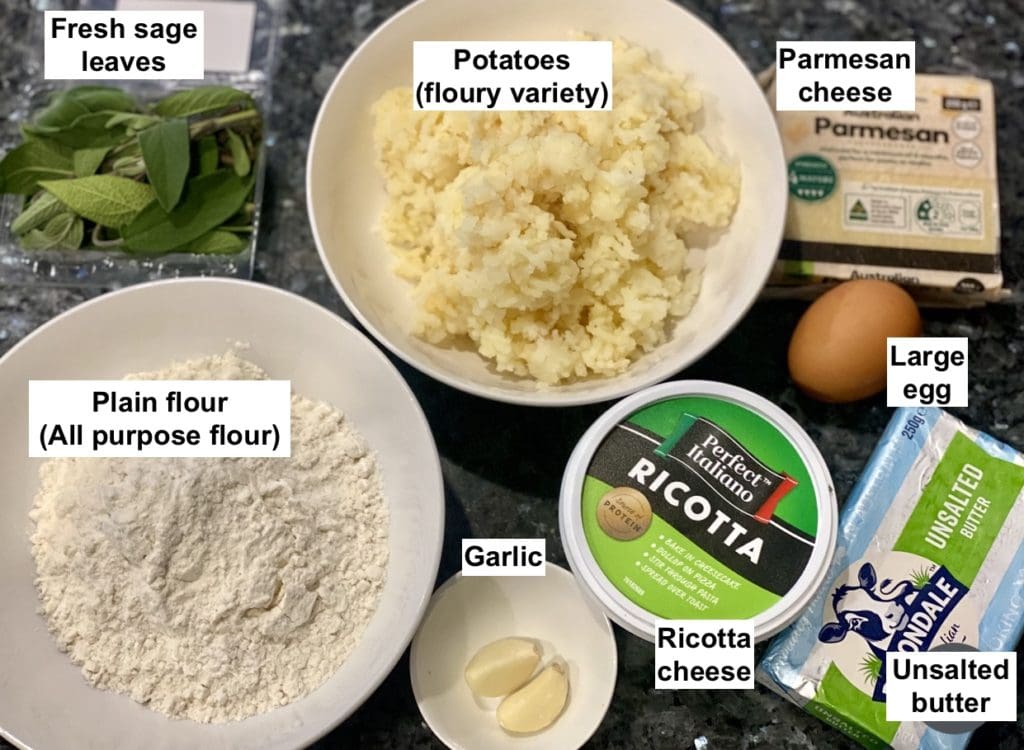
Plain flour (all-purpose flour) does not have any leavening or raising agents (such as baking powder) mixed into the flour.
Potatoes – I used Desiree potatoes, however, other ideal potatoes for gnocchi are Creme Royale, King Edward, Russet potatoes or all-rounder/purpose potatoes. Old potatoes (a week old from when purchased) are also ideal for making gnocchi as they contain less water. Avoid potatoes that are too wet, starchy or waxy as you may end up with mushy gnocchi that won’t hold their shape.
Ricotta cheese – You could leave this out if you wish, but it will make the gnocchi a little softer in texture, a tip provided by Gordon Ramsay. Ricotta is a whey cheese that’s mild in taste and is comparable to cottage or cream cheese.
How to make Gnocchi with Brown Butter and Sage
Step-by-step guide with photos
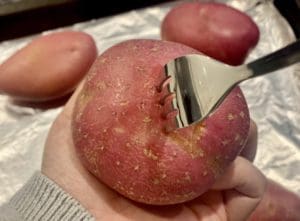
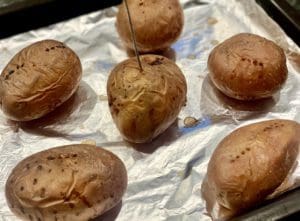
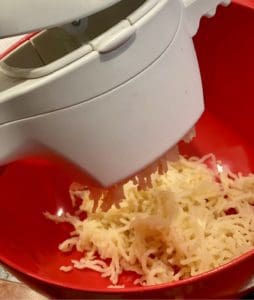
Preheat the oven to 220°C (430°F) or 200°C (390°F) for fan-forced ovens. Line a large baking tray with foil or baking/parchment paper. Wash and dry the potatoes, then use a fork to pierce each potato everywhere (around 4 to 5 times). Bake the potatoes for 40 to 60 minutes, just until the potatoes are tender. A skewer should pierce through the potatoes effortlessly, but don’t over-bake the potatoes as hard, thick skin will form around the potatoes.
Allow the potatoes to cool for 10 minutes or cool enough to handle. Peel the potatoes and cut them in half. Use a potato ricer to press the potato halves into a large bowl. If a ricer is not available, you can grate the potatoes using a box grater. Don’t put the potatoes in a blender or food processor as they’ll turn into a gluey texture.
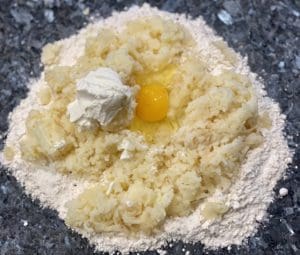
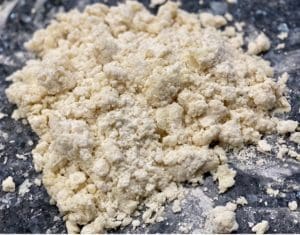
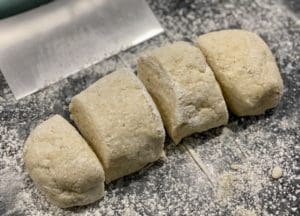
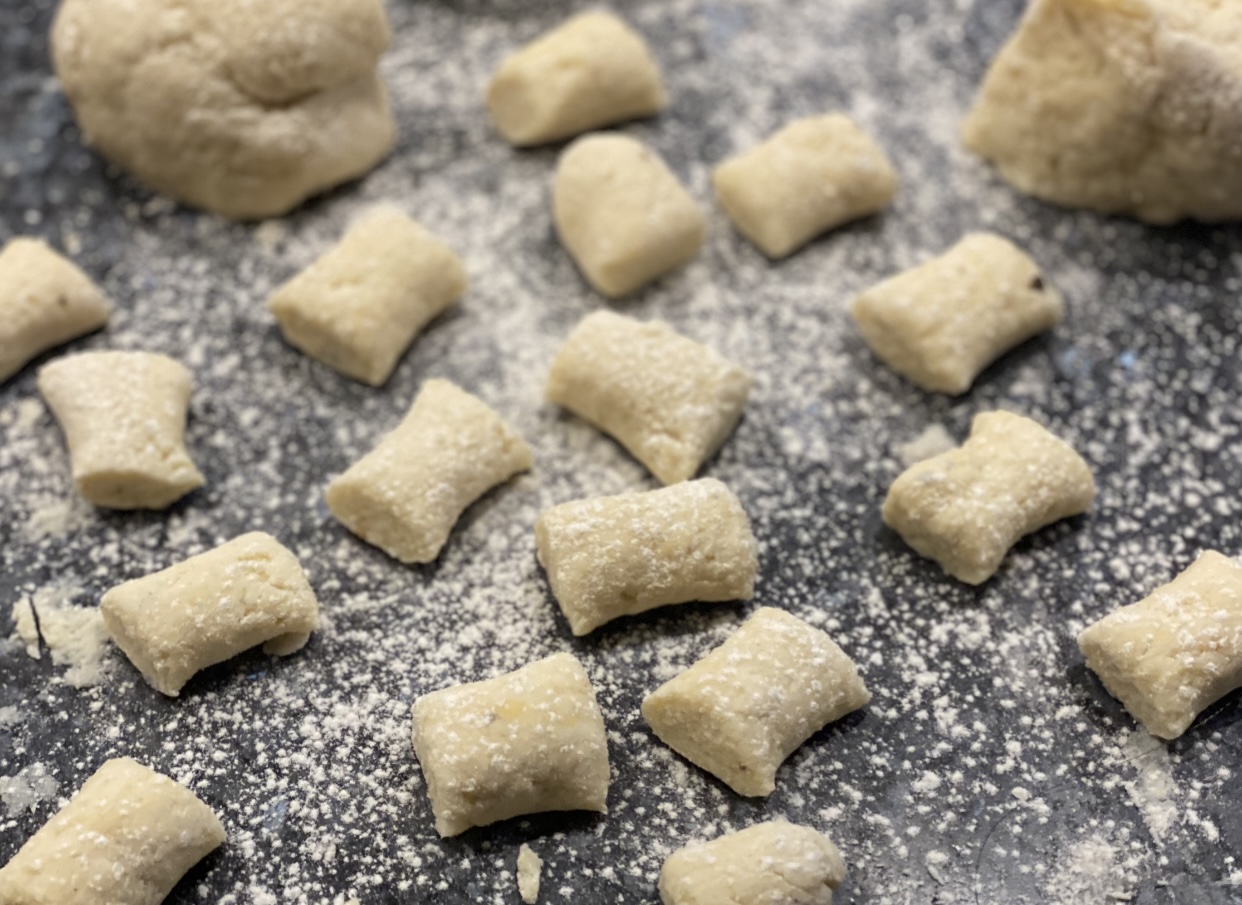
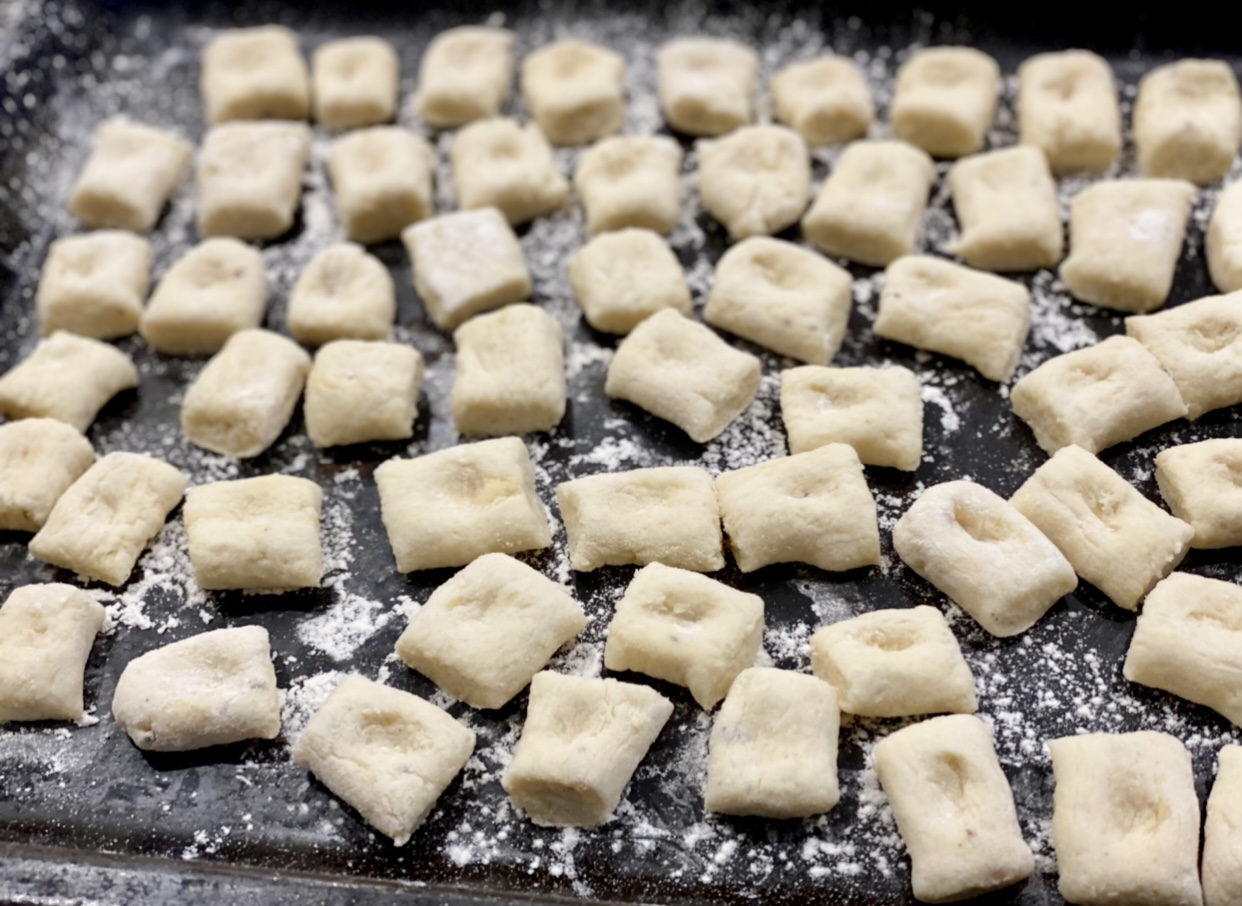
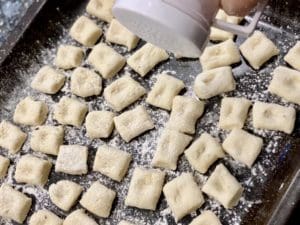
Place the flour on a clean workbench, then mix in the salt and pepper. Make a well in the centre of the flour, then add the potatoes, egg and ricotta. Mix the ingredients together with your fingers until well combined and gather them together to form a dough. Gently knead and fold the dough a few times but don’t overwork the dough as you may end up with tough gnocchi. The dough should be soft but not sticky.
Cut the dough into 6 to 8 pieces and roll each piece into a rope. Cut out approximately 2 cm (3/4 in) pieces from each of the ropes. Flour a finger and make a visible dent in the middle of each gnocchi (or roll them against the back of a fork) Lay the gnocchi in a single layer on a lightly dusted tray, then lightly sprinkle some more flour on top of them. Let them rest uncovered for 30 minutes before cooking.
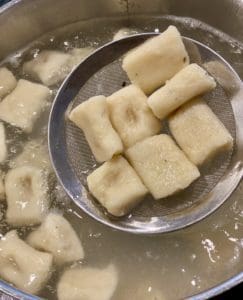
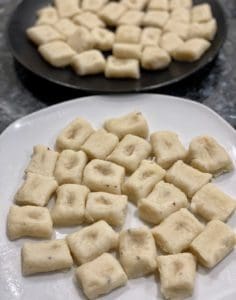
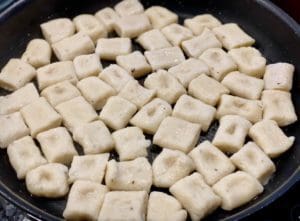
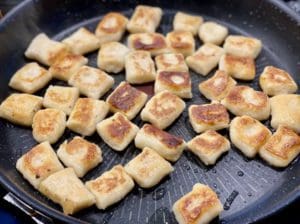
Fill in a medium saucepan 3/4 full with water, then add a tablespoon of salt into the water. Place the pan over medium-high heat and bring the water to a boil, then add a batch of gnocchi (cook gnocchi in batches to prevent them from sticking). As soon as the gnocchi floats, it’s done, so remove with a slotted spoon or strainer and place them in a single layer on a plate.
Heat oil in a large frying pan over medium-high heat, then add a batch of gnocchi and place them in a single layer in the pan. Cook the gnocchi on each side for 1-2 minutes or until they have golden crusts. Transfer the fried gnocchi onto a plate.


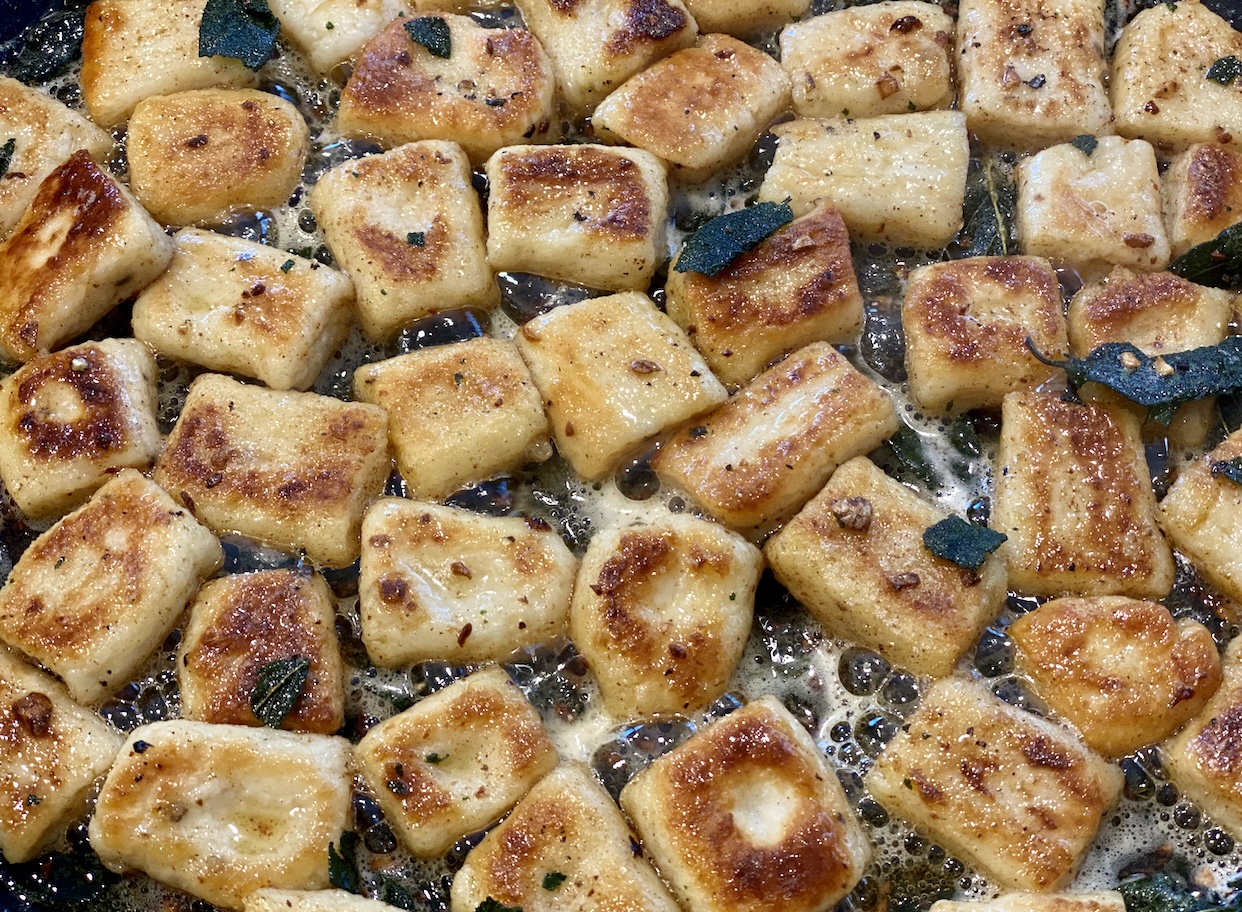
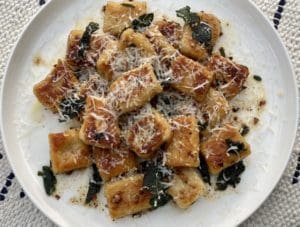
Wipe the same frying pan clean with paper towels. It’s okay if there’s a small amount of oil remaining. Place the pan over medium-low heat and add the butter. Swirl the pan to help the butter melt, then leave it untouched. Once the butter smells nutty and the milk solids (dark bits) have sunk to the bottom, add in the garlic, sage leaves and salt. Cook for a minute, or until sage leaves are crispy, then add in the gnocchi. Cook for 2 to 3 minutes, stirring gently or until the gnocchi is heated through. Have a taste and add more salt or pepper if needed. Place the Gnocchi onto plates, then grate a generous amount of parmesan cheese over the top.
I’ve used a third-party application to calculate the calories and nutritional information, so please use this as an approximate guide only.
Cooking measurements are in Australian standard spoon and cup measurements. For specific details and conversions, visit our Australian Cooking Measurements page.
I would love your feedback and support if you made this recipe. To do this, please rate this recipe and provide a comment by scrolling down this page or by clicking that green circle on the bottom left. An email address is required (for spam), but it won’t be published. I would also love to see your dish, so don’t forget to tag me on my Instagram account ‘3catsfoodie’
Cheers – Cat T
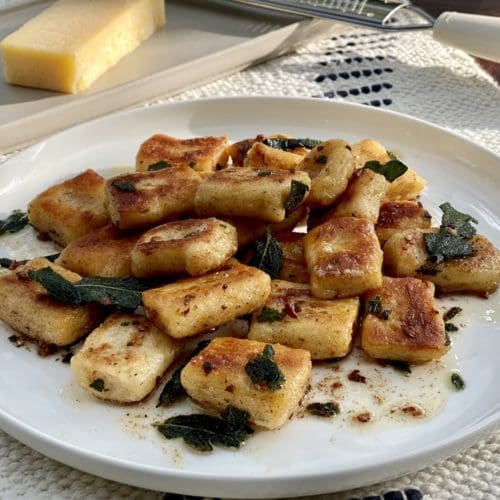
Gnocchi with Brown Butter and Sage
Ingredients
Homemade gnocchi (or use 500gm-1.1lb of pre-made gnocchi)
- 900 -1000 gm potatoes (large, floury variety) (NOTE 1)
- 1 cup plain flour (more for dusting) (NOTE 2)
- 1 large egg
- 2 tbsp ricotta cheese (drained, solids only) (NOTE 3)
- 1 tsp salt
- ¼ tsp freshly ground black pepper
For the brown butter
- 1 tbsp olive oil (mild or light)
- 80 gm butter
- 2 cloves garlic (minced)
- ⅓ cup fresh sage leaves (loosely packed or 20 leaves)
- ¼ tsp salt
- salt and pepper to taste
- freshly grated parmesan cheese to serve
Instructions
- Preheat the oven to 220°C (430°F) or 200°C (390°F) for fan-forced ovens. Line a large baking tray with foil or baking/parchment paper. Wash and dry the potatoes, then use a fork to pierce each potato everywhere (around 4 to 5 times). Bake the potatoes for 40 to 60 minutes, just until the potatoes are tender. A skewer should pierce through the potatoes effortlessly, but don't over-bake the potatoes as hard, thick skin will form around the potatoes.

- Allow the potatoes to cool for 10 minutes or cool enough to handle. Peel the potatoes and cut them in half. Use a potato ricer to press the potato halves into a large bowl. If a ricer is not available, you can grate the potatoes using a box grater. Don't put the potatoes in a blender or food processor as they'll turn into a gluey texture.

- Place the flour on a clean workbench, then mix in the salt and pepper. Make a well in the centre of the flour, then add the potatoes, egg and ricotta. Mix the ingredients together with your fingers until well combined and gather them together to form a dough. Gently knead and fold the dough a few times but don't overwork the dough as you may end up with tough gnocchi. The dough should be soft but not sticky.

- Cut the dough into 6 to 8 pieces and roll each piece into a rope. Cut out approximately 2 cm (3/4 in) pieces from each of the ropes. Flour a finger and make a visible dent in the middle of each gnocchi (or roll them against the back of a fork) Lay the gnocchi in a single layer on a lightly dusted tray, then lightly sprinkle some more flour on top of them. Let them rest uncovered for 30 minutes before cooking.

- Fill in a medium saucepan 3/4 full with water, then add a tablespoon of salt into the water. Place the pan over medium-high heat and bring the water to a boil, then add a batch of gnocchi (cook gnocchi in batches to prevent them from sticking). As soon as the gnocchi floats, it's done, so remove with a slotted spoon or strainer and place them in a single layer on a plate.

- Heat oil in a large frying pan over medium-high heat, then add a batch of gnocchi and place them in a single layer in the pan. Cook the gnocchi on each side for 1-2 minutes or until they have golden crusts. Transfer the fried gnocchi onto a plate.

- Wipe the same frying pan clean with paper towels. It's okay if there's a small amount of oil remaining. Place the pan over medium-low heat and add the butter. Swirl the pan to help the butter melt, then leave it untouched. Once the butter smells nutty and the milk solids (dark bits) have sunk to the bottom, add in the garlic, sage leaves and salt. Cook for a minute, or until sage leaves are crispy, then add in the gnocchi. Cook for 2 to 3 minutes, stirring gently or until the gnocchi is heated through. Have a taste and add more salt or pepper if needed. Place the Gnocchi onto plates, then grate a generous amount of parmesan cheese over the top.




